Siem Reap, Cambodia; Originally posted February, 2012 – It’s three o’clock in the morning, and a large man with a French accent is telling me the prices for his girls. We’re drinking at the X-Bar, a popular after-hours nightclub in the Cambodian tourist town of Siem Reap. With its prominent location overlooking the local Pub Street and it’s leering, neon signs, the X-Bar is hard to miss. So are the girls.
Working through the night, the prostitutes here gravitate toward anyone who looks like he might have money to spend and the liquor in his head to spend it. On this particular night there are more girls here than customers and the competition is fierce. Two lean into me and make whispered promises if choose them over the others. The smell of bad tequila along with heavy makeup and dark curls helps them look older than they probably are. I can barely hear them speak over the pounding UB40 track playing in the background, while down the bar a group of Australian backpackers picks up a round of shots. It’s just another night in Siem Reap.
Human trafficking has gotten a growing amount of attention in 21st Century bringing on an international focus that’s long past due. In a single year more than 33,000 people will be trafficked across borders worldwide according to a State Department estimate, most into the sex trade. Despite the size of the crisis, however, most people associate it with shadowy marketplaces and dark villages. It is a problem, in other words, that you have to look for. Stay on the beaten path and it will never find you.
Until your travel agent books you a visit to Siem Reap.
First let me tell you that Siem Reap is a bucket list must for everyone who’s ever bought a plane ticket. The northern Cambodian city is home to Angkor Wat, a breathtaking temple complex that covers a section of jungle larger than the island of Manhattan. Built by the Khmer Empire in the 12th Century, the monument draws in well over a million people per year and fuels a booming tourist economy in this otherwise impoverished country. Glittering resorts line the streets shoulder to shoulder with backpacker guesthouses, five star restaurants and one dollar noodle stands. The lights never turn off, and just about everything is for sale to the right buyer. In this marketplace sex trafficking has boomed.
At the tourist clubs and karaoke bars girls cluster around tables chatting together while they wait for their dates to arrive. Early in the night a sex worker in Siem Reap will let the client entertain her first, having drinks, dancing and playing games of pool before the business starts. As the night wears on and the prospect of going home empty handed looms, however, the sales pitch gets more aggressive. It’s no surprise either. With the punishments handed out by angry pimps for an unsuccessful night, the girls here are very motivated sellers. Nobody wants to be the one coming home empty handed when the sun comes up.
You won’t see this discussed in many guidebooks or Travel Channel shows; it barely even rates a mention in the popular Lonely Planet guide’s “Dangers and Annoyances” section. However the flush of prostitution in this boomtown is well known to the locals. Any expat drinking at Madam Beergarden can rattle off a list of clubs where you’ll find the city’s working girls, and another if you want to avoid them. Complain about a night spent fending off unwanted offers and you’ll usually get a knowing shrug and weary comment. What did you expect? You’re in Siem Reap.
The local drivers, young men who pull motorbike carriages called tuk-tuks, are experts at helping tourists find a good time. You don’t even have to ask. Take a walk after sunset and it won’t be long before someone rolls by with a quiet offer to take you to the girls.
Enough people say yes.
The runaway sex trade in Cambodia isn’t the result of a bad people or poisonous culture. In fact the local Khmer culture is a very conservative one that emphasizes modesty in both private and public life. The sex and drug trades here are banned by laws stronger than anything in the United States. However those laws often end up worth little more than the paper they’re printed on when they run into the immense wealth of this shadow industry and the relative powerlessness of national and local government to do anything about it.
With corruption endemic at all levels of Cambodian society and a customer base that is incomparably wealthy by local standards, the industry’s explosion was all but inevitable. Western money exerts an outsized influence here, as it does in many developing nations. At time of writing, one United States dollar could buy approximately 4,000 Cambodian riel, and most local merchants here simply prefer to have the dollars. It doesn’t take much Western money to be very rich here, and that often presents officials with an offer that they won’t refuse.
The governments in both Siem Reap and Cambodia at large struggle to maintain authority in their own country. Arguably the greatest difficulties start at the grass roots with law enforcement. Local police officers in this city can earn as little as $2 U.S. per day for their work, a technically living wage that still leaves most of them mired in poverty. A group of girls can bring in a hundred times that in a good night, asking tourists for the negligible sums of $40 or $50 for just one hour. When criminals can pay the police more than the state, corruption becomes a virtual certainty.
Money, after all, is power.
I finish my drink at the X-Bar and prepare to leave, watching two girls getting ready to do the same. Before they can go, however, they have to ask permission from the Frenchman. “Daddy.” He allows the anger to pass across his face only for a moment as he chastises them for “not [bringing] anyone home for me tonight.” They apologize and promise to try harder tomorrow before running off and down the stairs, towards a knot of girls who wait for stragglers at the bottom.
- Write More Listicles - August 12, 2021
- Find The Hard Interview - July 28, 2021
- Using Your Voice - August 22, 2018

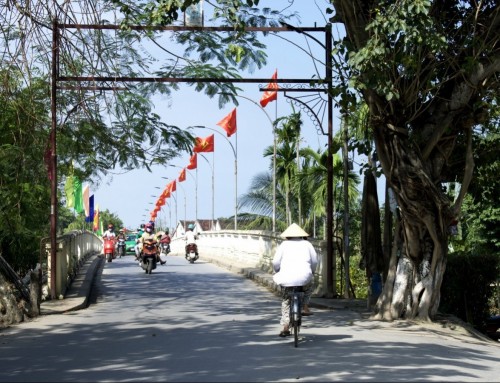
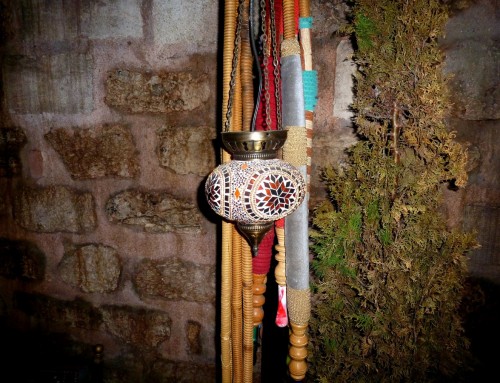
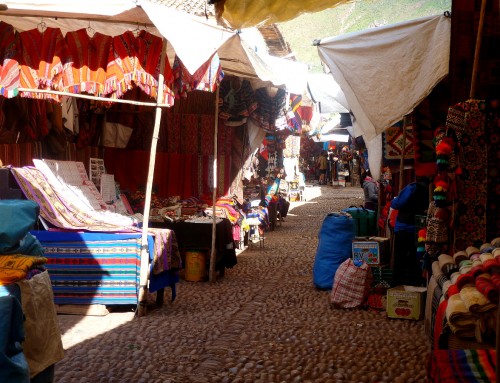
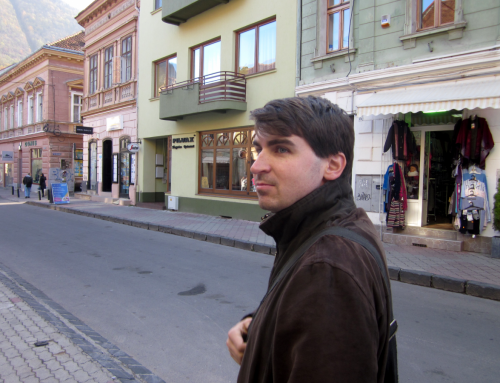
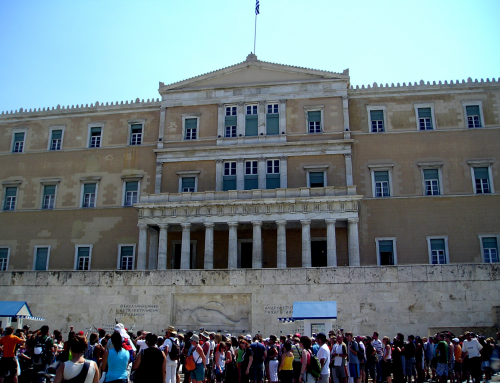
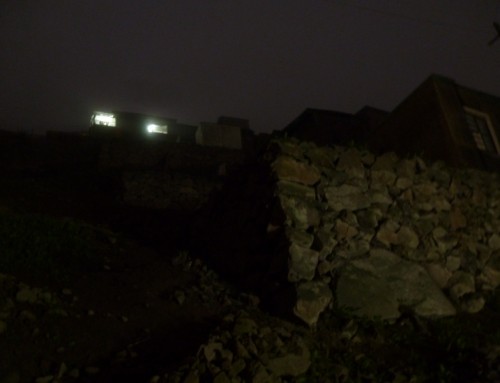
My wife and I have been in Cambodia for two weeks now, Siem Reap for one. Had a tuk-tuk driver take us home from the city and it seemed like we went the “back way” as it differed from our Google Maps. Witnessed the neon lined streets ourselves with girls waiting in the corridors of the clubs. Immediately came and researched prostitution in Cambodia and this sight clarified everything for us. Great writing! Keep it up!
Thanks for the kind words Tyler!
Of course, it’s important for us to remember that there’s so much more to Siem Reap and Cambodia. This is only one side of a wonderful, complicated, often troubled nation. I hope you and your wife have otherwise been enjoying your trip.
Try and make the journey to Battambang, it’s well worth the trip! If time allows, also try and get east to Bokor. It takes a while getting there, but you’ll be glad you did.
A Short Note:
This article has attracted a lot of comments from readers, the overwhelming proportion of which are vitriolic. A recent example came from a reader who identified himself as Liar from the e-mail address YouLie@liar.com. His comment began with “I actually don’t even remotely believe your story” and continued from there.
I am more than happy to post comments which question my reporting, as I think disagreement is essential to any questions of truth. Had Mr. Liar’s comment restricted itself to respectful debate instead of calling me names, I would happily have posted it. However I do not post comments which support human trafficking, which contain vulgarities or which indulge in personal attacks. These are not helpful to any substantive discussion and, frankly, I will not subject my readers to this content.
To a few of the specific concerns that these commenters raise frequently:
– Prostitution is not that bad/human trafficking is not a problem in Cambodia
The moral and legal place of consensual prostitution is a complex issue. I will be the first to agree that I have met people with an extremely wide range of thoughtful positions on this issue. Sex trafficking, however, remains an ongoing human rights catastrophe in Cambodia. According to some estimates, roughly 1.6% of the Khmer population lives in some form of modern slavery, many in the sex trade. (https://www.globalslaveryindex.org/country/cambodia/) The U.S. State Department confirms this in its annual Trafficking In Persons Report:
“All of Cambodia’s provinces are a source for human trafficking. Sex trafficking is largely clandestine; Cambodian and ethnic Vietnamese women and girls move from rural areas to cities and tourist destinations, where they are subjected to sex trafficking in brothels, beer gardens, massage parlors, salons, karaoke bars, and non-commercial sites.” (https://www.state.gov/j/tip/rls/tiprpt/countries/2015/243409.htm)
– I have visited/lived in Siem Reap and/or Cambodia and/or Southeast Asia and never saw this
While spending time in a place is essential to truly knowing it, there’s always more to learn.
We can live our whole lives in a city and barely scratch the surface of many of its lives and local experiences. I, myself, lived in Chicago for three years and yet would never presume to be an expert on the way of life in its South Side. Living someplace, having a local bar and going to work everyday will teach us about the places in our local orbit. That leaves a lot of people unmet.
When it comes to issues such as human rights, for most people, that simply will never come up. That’s not an insult. The average person doesn’t go to the bar looking to learn about human trafficking, and that’s a good thing. But you’d be genuinely surprised how much of this goes on in plain sight. (https://www.npr.org/sections/thesalt/2017/03/29/521971468/in-u-s-restaurants-bars-and-food-trucks-modern-slavery-persists) (This is not to attack Cambodia. This is a huge problem everywhere, including the United States.)
A traveler or even a resident can visit the same bar every night and never notice the girls who don’t really want to be there. That doesn’t mean they’re not there. That’s why journalism is a dedicated profession. It takes enormous amounts of time and patience to ask questions and find stories like this. I did not happen upon this, or any other, story by accident.
– I can’t imagine this in Siem Reap, it’s too busy
As a threshold matter I’ll point out that this story was written in 2012. While none of the literature I’ve read suggests it, conditions in Siem Reap may well have changed. The older a story is, the more important it is to keep that context in mind.
Nevertheless, I will reiterate my point from above. Agencies dedicated to this issue have reiterated over and over again that Cambodia continues to struggle with human trafficking, and sex trafficking in particular. What’s more, tourism destinations in general are enormous hotspots for this crime. Wherever you have a large, transient, moneyed population you create the risks of trafficking.
The vast numbers of people traveling through Siem Reap, if anything, can often only heighten that risk. Traffickers and their victims stand out less in huge crowds. This is why every World Cup spikes local concerns about sex trafficking. The risk goes up, not down, with population and attention. (https://www.iom.int/sites/default/files/our_work/ICP/IDM/mrs29THBWCG.pdf)
I love Cambodia. I, too, have lived in Siem Reap and worked as an aid worker there and look forward to returning many times. But we don’t do the places we love any favors by overlooking major problems. These girls are real, as are the men and women who hold them. Turning a blind eye because this is an insult to a place, population and people will only hurt the next generation.
Happy to publish spirited debate, but please keep it respectful.
Your article is very one dimensional and indulges in the “big bad white man” stereotype.
Prostitution existed in Cambodia, and Asia, long before the first white man set foot.
Most local men loose their virginity with a prostitute.
Many married men occasionnally go to their favorite brothel “enjoy” a prostitute.
And then, some foreigners (the big bad white men) do the same, some out of lust, some out of too much alcohol.
Not to forget the naive, looking for love, most of the time ending up cheated.
So you see, it s a bit more complex than what your article suggests, and to be honest such articles not reflecting reality are actually misleading.
Try to be more objective, and better informed, next time…
Hi Uncle,
I’m not entirely certain I understand your objection to this piece. It is not intended as a dissertation on prostitution in Cambodia, rather one specific perspective on one specific market.
However, my two responses would be: Yes, if you are frequenting prostitutes in an Asian tourist town and are white and male, you probably are a “big, bad white man.” Other terms you will find directed at you include sexpat, sex tourist, dirty tourist, dirty old man and sex pest. Pointing out that some residents indulge this market is essentially crying that “he did it too.” This is an excuse relied on by children, and it does not improve as you age.
Second, prostitution does exist pretty much everywhere and is, indeed, a complicated issue. However tourism and human trafficking exacerbate this market in both ugly nature and quantity. On my last visit to Siem Reap some of the tuk tuk drivers actually had photos on their phones of the girls they could take me to. Offers like this rarely involve young women working of their own volition and are virtually never made to local men. For this reason it is important, indeed critical, to study the impact that tourism has on the treatment of women and children. This is why the TIPS report discusses this at length and why the FBI runs its Twisted Traveler program.
I’m not sure if either of these points address your concerns because, again, I’m not entirely sure what your concerns actually are. Nevertheless, thanks for reading.
Hello,
I need to correct you in this paragraph……
“Local police officers in this city can earn as little as $2 U.S. per day for their work, a technically living wage that still leaves most of them mired in poverty. A group of girls can bring in a hundred times that in a good night, asking tourists for the negligible sums of $40 or $50 for just one hour. When criminals can pay the police more than the state, corruption becomes a virtual certainty.”
Firstly, the $2 a day salary for police is incorrect… In 2015, it was closer to $4 a day.
(salary report here from 2015 – https://www.cambodiadaily.com/news/low-ranking-police-soldiers-to-see-salary-increases-76041/)
Police also receive many non cash benefits, such as land, housing, food, clothing, motor bike etc… Currently, the lowest ranking Cambodian police officer receives around $160 a month which is above minimum wage. Police also receive numerous bribes and kickbacks. The size of their belly normally is an indication how successful they are in receiving bribes. A foreigner with no licence on a motorbike can expect to pay a bribe of at least $5. Possession of a small quantity of cannabis is at least $50 to get out of being charged. Meth possession bribe amount is at least $200 and as much as $2000. A UK child sex offender in Sihanoukville in the south paid a bribe of $4000 USD (in late 2016) to be escorted to the airport and leave the country without being charged. Police in Cambodia are definitely NOT in poverty. !!
Only a few weeks ago, a very well known Australian Meth dealer in Sihanoukville was released from prison after serving 2.5 years. He paid a bribe to local police not to be deported and restore his business visa. Exact amount unknown, but believed to be in the thousands. That Aussie has a warrant for his arrest in Australia and certainly does not want to go home.
The suggestion that a group of girls can make in reference to a $2 a day salary, “can bring in a hundred times that in a good night”…. is exceptionally rare. Siem Reap is not known as a “sexpat” destination. There are really not that many working girls there for tourists or sexpats. The average working girl in S.R. is lucky if she can find more than one foreigner for paid sex in a week or two. There are many hostess bars, but strictly for local Khmer guys where a short time girl gets maybe just $4 or $5.
Of the girls that seek foreigners, while they might on the extremely rare occasion get a gullible foreigner who would pay $100 for short time, working girls in reality only get $10-20 short time, and $30 to 50 all night….. prices are negotiable with some girls at X-bar only asking $5 from a foreigner. Due to a major crackdown on prostitution in S.R. over last 12 months, there are very few hostess bars for locals, and Mikey’s Night bar is the only hostess bar for foreigners in S.R.
More commonly in S.R. with working girls is what is sometimes called, “temporary girlfriend”…. For that they might receive $100 for a week, or $250 for a month. The girl stays full time with the foreigner as a pretend girlfriend. There is a hotel/guesthouse owner I know from France who has 3 live in “temporary girlfriends” that he changes from time to time with a different girl. He pays each of the girls $150 a month.
Also, due to the crackdown, very few working girls attend X-bar anymore. In late 2017, a sudden increase of working girls from S.R. were arriving in Phnom Penh after being forced out of S.R.
Prostitution is sadly, a necessary commodity in Cambodia. When the farm girl’s mother is sick and needs expensive surgery, the girl will go to the city and sell her body to raise the money for her mother, where the combined family income might be less than $1500 a year.. It is common practice. When husband and wife are about to be evicted from their home for falling behind in rent, the wife (with consent of the husband) will commonly go find a couple foreigners for paid sex to get the rent money.
—- About the author of this post……. I am a foreigner who has several financial investments and residing almost full time in Cambodia since 2006.
Hi Expat,
Thank you for your thoughtful response.
You’ve put your finger, I’m afraid, on one of the core problems with internet publication. These days almost everything we read feels like it’s presented as current and contemporaneous information. Unfortunately that’s often not the case. As you aptly point out, an article written seven years ago will contain a great deal of information that may no longer be accurate when read in 2018, even if Google presents it as a relevant search.
This is doubly true for a place changing as rapidly as Siem Reap is.
The trouble is that there’s little that we, as journalists, can do about it. We don’t pull articles down because they’re part of an historical record. This was the state of affairs seven years ago. In 2011/12 a low-ranking police officer in the Siem Reap province did make $2 per day, even if they may have made $4 by 2015 and perhaps more now. And while X-Bar may be a different place today, this was how it operated back then. Indeed, I left several of the more prurient details out.
We can’t edit and update articles for the same reason. An article isn’t a living document, it’s a record of what happened at a place and time. What’s more, without new reporting there’s no way to know that the updated information is accurate. By trying to clarify matters we might simply create more inaccuracy.
I’m afraid as journalists there’s little more we can do than preserve the date of publication and hope that readers take the article with that context. That and try to get funding to go back and write a new piece when circumstances warrant. (Indeed, I was in Siem Reap just three months ago and agree with you that things have changed in many ways. Nevertheless, tuk tuk drivers still offered to take me to prostitutes literally every time I walked down the street alone, and several now carry smart phones with which they showed me pictures of the girls on offer. Perhaps a little same same but different.)
That said, I will disagree with you on one thing. You note that “The size of their belly normally is an indication how successful they are in receiving bribes” as a disagreement with my piece. This was actually my point. Bribery plays an essential role in allowing prostitution and sex trafficking to flourish. Because police receive such low pay (or received, as the case may be), they are easily bribed by brothel owners. So it doesn’t matter what trafficking laws the country writes. When criminals can bid competitively with the government, no one will actually get arrested. It is this ground level enforcement that is the greatest weak link in stopping human trafficking in many countries, Cambodia included.
Thanks again for reading and for commenting.
Best,
Eric
Edit – I notice now that an update a couple of years ago changed this article’s date stamp to 2016. I’m sorry that I didn’t catch that. As this article gets a lot of attention, I’ve made the relevant information more clear up at the top.